IBM Infoprint 1585 (4539-N01, 4539-DN1)
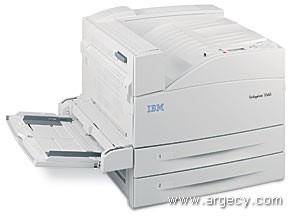

Fully refurbished with 90-day warranty
4539-N01 75p6886
$999.00
New
4539-N01 75p6886 (New)
Fully refurbished with 90-day warranty
4539-DN1 39v2388
$1199.00
Up to 50 ppm letter/A4, monochrome printer, supports up to A3/Ledger media
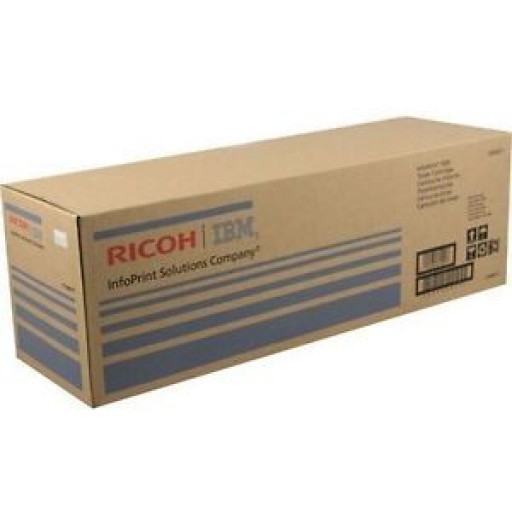 75p6877 Toner Cartridge | ||
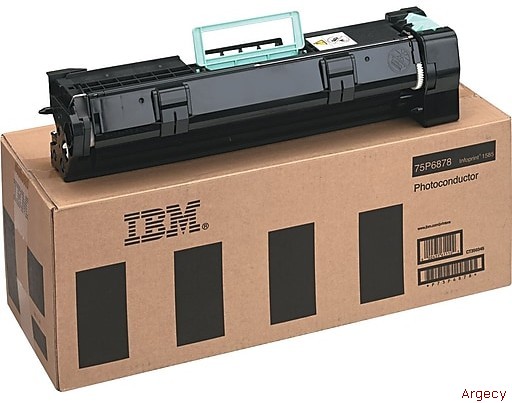 75p6878 Photoconductor | ||
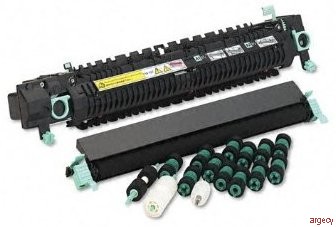 39V2603 Usage Kit (Fuser Maintenance Kit) |
The IBM 4539 Infoprint 1585 monochrome laser printer supports wide format printing and optional two-sided printing. It prints 50 pages per minute (PPM)(1) on letter/A4 size sheets, 28 PPM(1) on 11x17 inch sheets, and has a quick first-page-out time as fast as 7 seconds. This printer's extensive input and output options enable scalable solutions with reduced costs and increased productivity.
Note: (1) Exact print speed varies depending on document complexity, system configuration, software applications, driver, and printer status.
Model Abstract 4539-N01
The IBM 4539 Infoprint 1585 monochrome laser printer Model N01 has a powerful 625 MHz processor with 256MB of standard memory.
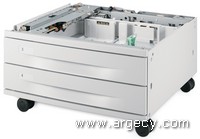 39v0943 2 x 500 Drawer | |
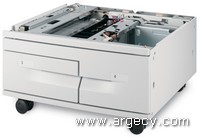 39v0944 2000 sheet dual input | |
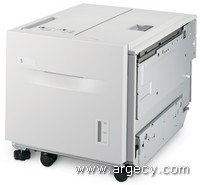 39v0947 2000 sheet high capacity input | |
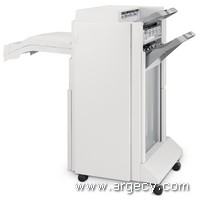 39v0945 2/3-hole finisher punch | |
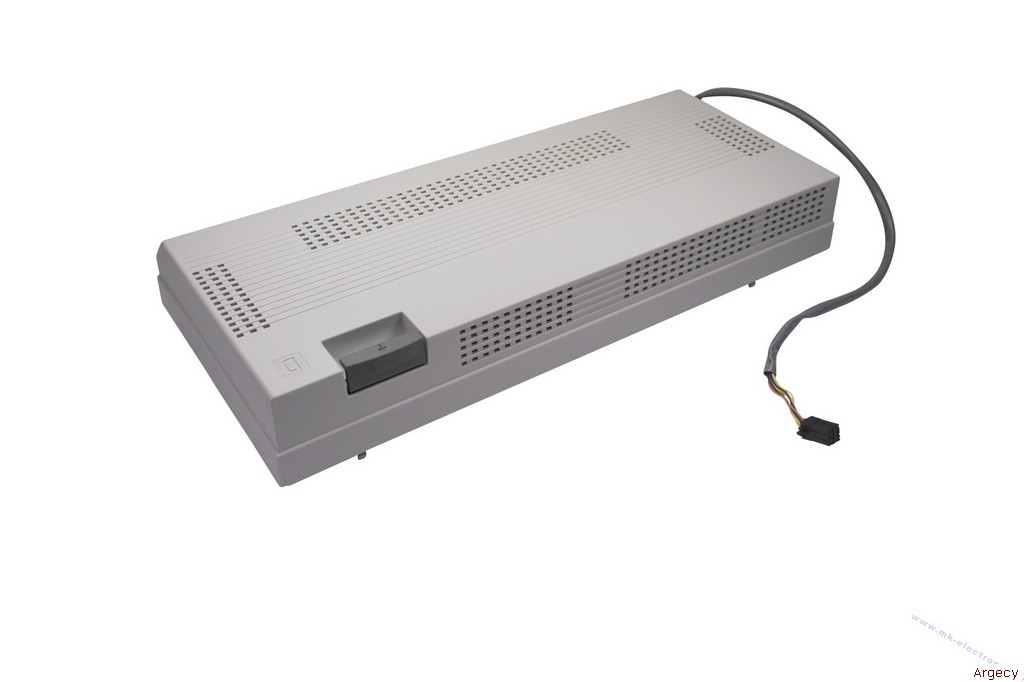 75p6949 Duplexer | |
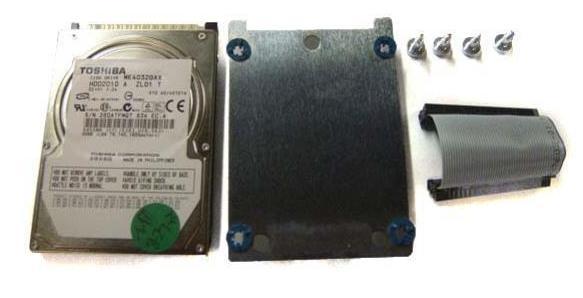 75p5008 20+GB Hard Disk with Adapter | |
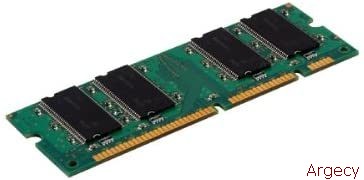 75P6986 128 MB Memory DIMM | |
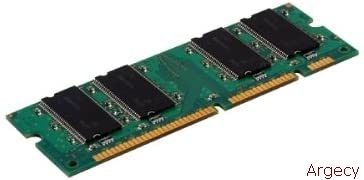 75P6987 256 MB Memory DIMM | |
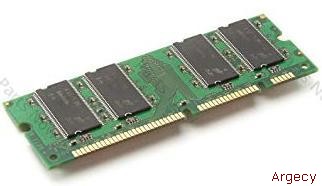 75P6988 512 MB Memory DIMM | 75P6988 Infoprint Brand 512 MB DIMM New 75P6988 (New) Retired, no longer available: Contact for alternatives |
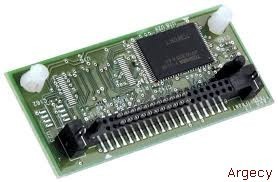 75P6989 32 MB Flash Memory | |
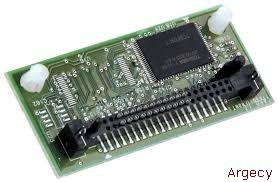 75P6990 64 MB Flash Memory | |
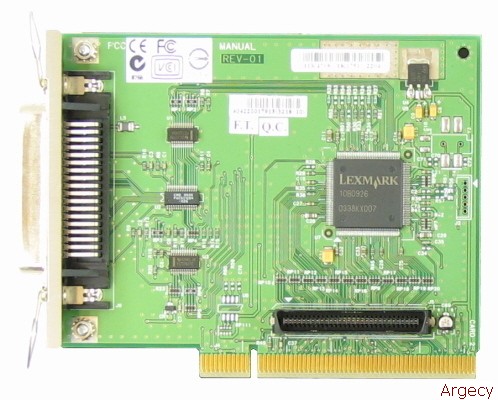 39V0327 Parallel 1284-B Interface Card | |
 75p6854 802.11g Wireless to USB | |
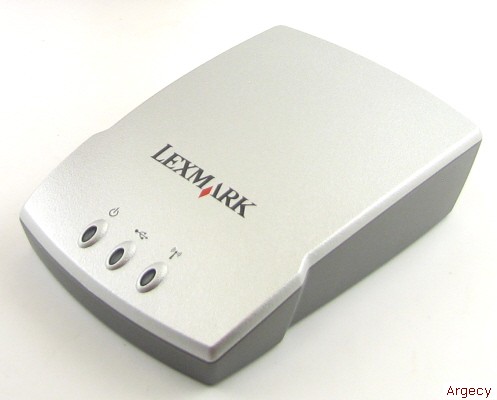 75p6857 802.11g Wireless to Ethernet | |
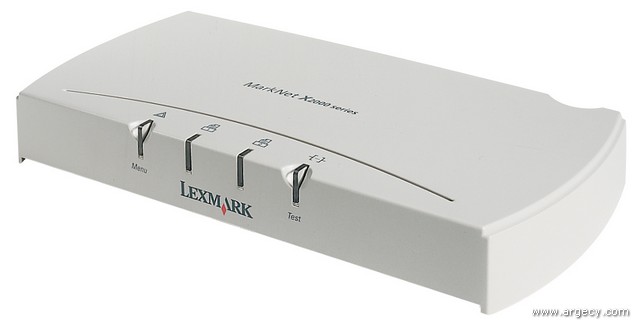 28p1836 Token Ring 3-port | |
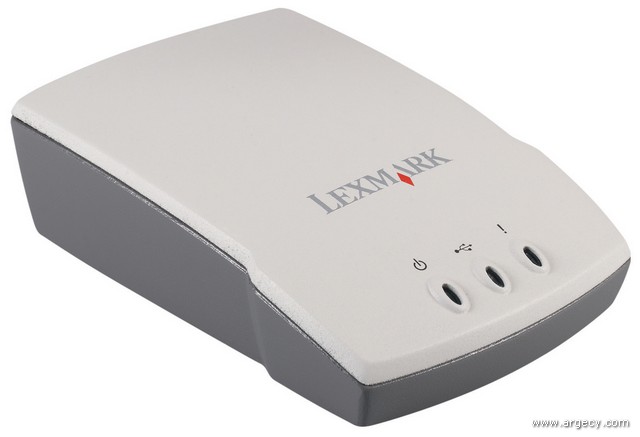 28P1839 Ethernet 10/100 | |
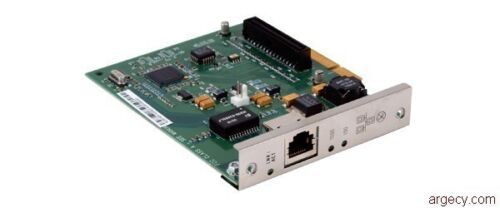 75P6992 Ethernet 1000BaseTX | |
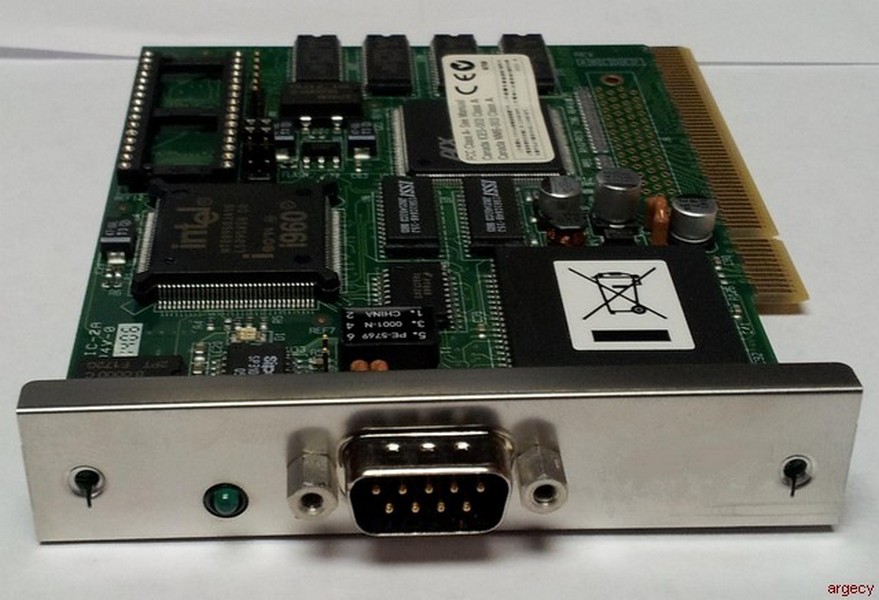 39V0212 Coax/Twinax Card for SCS | |
 75P6957 Bar Code Card | |
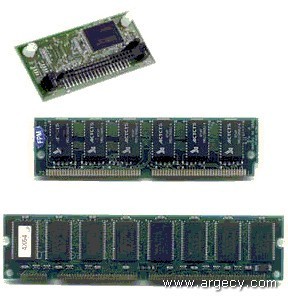 39V0228 Decryption Card | |
 75p6954 IPDS | |
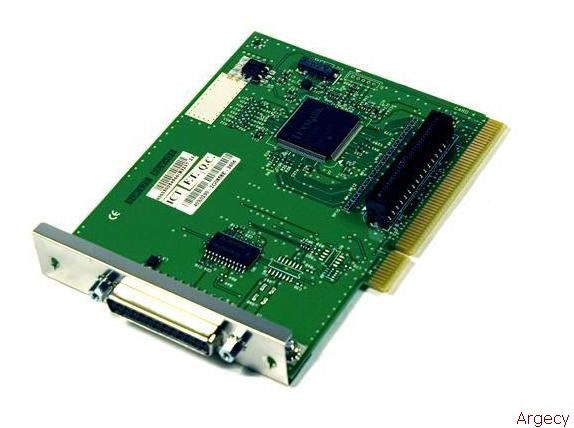 39V0326 Serial Interface Card | |
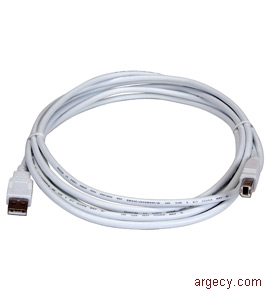 28P1875 USB Cable |
Highlights
- Up to 50 ppm letter/A4, monochrome printer, supports up to A3/Ledger media
- High-capacity input and output, finishing with multi-position stapling, hole punch and offset stacking
- High function, easy to use operator interface
- Integrate advanced applications quickly with standard ImageQuick
- Convenient USB Direct Port for PDF printing
- Enhanced security features including secure wireless networking option
- Cross-platform print management solution
Description
The Infoprint 1585 monochrome printer comes in a network model only. The printer comes standard with 256 MB of memory, a 10/100BaseTX Ethernet port, two 500-sheet drawers, and a 100-sheet multi-purpose feeder. Standard input capacity is 1,100 sheets and standard output capacity is 500 sheets. The 1585 has a maximum input capacity of 5,100 sheets and a maximum output capacity of 3,800 sheets.
Printing complex jobs is made easier with the powerful 625 MHz processor, 256MB of standard memory, and an optional hard-drive upgrade. Produce great-looking documents with industry-leading print quality and achieve professional results with 2400IQ print resolution and true 1200 by 1200 dpi at full speed.
The Infoprint 1585 supports a variety of media types and sizes for user flexibility so you can produce complex documents in-house, to save time and cut costs. Paper handling options - such as duplex, high-capacity input, and a finisher - can handle a wide variety of input and output needs. Standard offset stacking capabilities allow for print job separation, and an optional high-capacity finisher on the Infoprint 1585 allows you to take advantage of multi-position stapling and hole punching for optimal productivity.
The operator panel is a four-line 160x64 APA (all points addressable) backlit gray scale display, supporting four lines with 20 characters per line. This provides easy navigation and usability is improved with simple to use, large, bold icons on the buttons. Reliability and serviceability are enhanced with "show me" screens and "tell me more" screens.
The Infoprint 1585 can adapt easily to existing infrastructures with the optional 802.11 Wireless feature. This printer will use the optional wireless feature and reduce installation cost by avoiding the expense of new Ethernet cabling. Add these printers to handle peak workloads, without waiting for IT to reconfigure cables. Preserve architecture or work around areas that are difficult or impossible to cable.
Print PDF documents quickly and easily. Once a flash memory device (thumb drive) is inserted in the front of the printer, a list of PDF files and directories are displayed. Navigational arrows are used to traverse the list/directory tree. The user can easily select the file, choose the number of copies to be printed, and submit the file for printing. The files are read and printed - no writing to the printer.
The Infoprint 1585 is provided with printer management utilities. MarkVision Professional is a cross-platform print management solution that enables IT administrators to proactively monitor and manage network devices in an enterprise environment via a web browser.
MarkVision Messenger enhances administrators' quality for service and improves end-user productivity and satisfaction by providing real-time notification of printer conditions and facilitates automated responses to these conditions before they become critical and disruptive to user productivity.
This printer provides several standard and optional features that improve or enhance the security of the device. Using the latest version of MarkVision Professional, administrators can configure and manage devices by using authenticated and encrypted network communications. Using Confidential Print, a user may assign a PIN to a print job, and have the printer hold that job until the user physically arrives and enters the correct PIN. This will prevent another user from taking the printed output from the output bin.
Usage rates
The maximum monthly usage is 300,000 impressions. IBM does not recommend printing to the monthly maximum on a consistent basis.
High-performance controller
The Infoprint 1585 controller features a 625 MHz Freescale processor. It comes with PostScript 3 and PCL 6 emulation, and a PPDS migration tool.
Memory:
The controller has one slot for memory DIMMs, two slots for flash memory cards or application solution cards, and one slot for internal network adapters, local adapters, or hard drives.
The printer comes with 256 MB of memory soldered onboard and can support a maximum of 768 MB of memory. An optional 20+ GB hard disk with adapter feature is available.
Optional flash memory up to 64 MB is supported using the optional flash memory cards. Flash memory cards can be installed in either application solution slot but the controller supports only one flash memory card.
Printer system attachment interfaces:
The printer comes with an IEEE 1284 Parallel interface with a type B connector, a Universal Serial Bus (USB), and a 10/100BaseTX interface as standard. The standard Fast Ethernet interface does not take up the network adapter slot. Optional wireless Ethernet is supported through the wired Ethernet port.
Print quality
The resolutions of the Infoprint 1585 are:
1200 x 1200 dpi
2400 Image Quality (default)
600 x 600 dpi
300 x 300 dpi
The Toner Darkness setting offers 10 user-selectable settings to balance print darkness and toner savings. The higher the setting, the darker the print. Within the range of print darkness settings, up to 35% toner savings can be realized. The factory default setting is 8. The Toner Darkness setting is available through the operator panel under the Print Quality menu and also accessible from the print driver.
The following settings are available to enhance print quality:
Setting accessed by: Operator Panel Driver Embedded Web Server
-------------------- -------------- ------ -------------------
Brightness X X X
Contrast X X X
Enhance Fine Lines X X
Gray Correction X X
Font support
The Infoprint 1585 printer resident fonts include support for the following:
Emulation Number of Scalable Fonts Number of Bitmapped Fonts
------------ ------------------------ -------------------------
PCL 6 89 2
PostScript 3 158 0
PPDS 39 5
Media-handling features
The Infoprint 1585 supports the following media-handling options:
- 2x 500-Sheet Drawer
- 2000-Sheet Dual Input
- 2000-Sheet High Capacity Feeder
- Duplex Unit
- 2/3-Hole Finisher
- 2/4-Hole Finisher
Features
The Infoprint 1585 supports the following features:
Mach Feature Part
Type Model Number Number Description
---- ----- ------- ------- ---------------------------
39V0943 2 x 500 Sheet Drawer
75P6949 Duplex Unit
39V0944 2,000-Sheet Dual Input
75P6951 2,000-Sheet High Cap Feeder
39V0945 2/3-Hole Finisher
75P6986 128 MB Memory DIMM
75P6987 256 MB Memory DIMM
75P6988 512 MB Memory DIMM
75P6989 32 MB Flash Memory
75P6990 64 MB Flash Memory
75P5008 20+GB Hard Disk with Adapter
75P6992 Ethernet 1000BaseTX
28P1836 Token-Ring-3 port
28P1839 Ethernet 10/100BaseTX-1 port
75P6857 802.11g Wireless to Ethernet
75P6854 802.11g Wireless to USB
28P1871 10 ft. Parallel Cable
28P1875 2-meter USB Cable
Accessibility by people with disabilities
Hardware Offerings
The following features support use by people with disabilities:
Controls and latches are operable with one hand and minimal dexterity.
Keys are discernible by touch without activating them.
The display, controls, latches, and levers are accessible to someone in a wheel chair.
Color is used as an enhancement for conveying information, and as an additional method of distinguishing between buttons, controls, and latches.
Performance Specifications
The Infoprint 1585 maximum print speeds are shown in the following table. Actual performance depends on:
- Interface to the host (serial, parallel, network)
- Host system and application
- Network complexity and traffic
- Page complexity and content
- Certain printer options installed or selected with the printer
- Available memory in the printer
- Printer resolution
- Media size
Continuous Print Speeds in pages-per-minute (ppm) are shown in the following table:
Media Tray 1 Tray 2 Tray 3 Tray 3 Tray 4 Tray 4 HCF MPF
2TM TTM 2TM TTM
----------------- ------ ------ ------ ------ ------ ------ ------ ------
Simplex
(pages per min.)
- Letter-L 50 ppm 50 ppm 50 ppm 50 ppm 50 ppm 50 ppm 50 ppm 50 ppm
- A4-L 50 ppm 50 ppm 50 ppm 50 ppm 50 ppm 50 ppm 50 ppm 50 ppm
- B5-L 50 ppm 50 ppm 50 ppm 50 ppm 50 ppm 50 ppm 50 ppm 50 ppm
- Executive-L 50 ppm 50 ppm 50 ppm 50 ppm 50 ppm 50 ppm 50 ppm 50 ppm
- A5-S 50 ppm 50 ppm 50 ppm NA 50 ppm NA NA 50 ppm
- 8.5x5.5 in.-S 50 ppm 50 ppm 50 ppm NA 50 ppm NA NA 50 ppm
- B4 33 ppm 33 ppm 33 ppm NA 33 ppm NA NA 33 ppm
- 8.5x13 in. 33 ppm 33 ppm 33 ppm NA 33 ppm NA NA 33 ppm
- 8.5x14 in. 33 ppm 33 ppm 33 ppm NA 33 ppm NA NA 33 ppm
- A3 28 ppm 28 ppm 28 ppm NA 28 ppm NA NA 28 ppm
- 11x17 in. 28 ppm 28 ppm 28 ppm NA 28 ppm NA NA 28 ppm
Duplex
(pages per min.)
- Letter-L 50 ppm 50 ppm 34 ppm 34 ppm 34 ppm 34 ppm 50 ppm 50 ppm
- A4-L 50 ppm 50 ppm 34 ppm 34 ppm 34 ppm 34 ppm 50 ppm 50 ppm
- B5-L 50 ppm 50 ppm 34 ppm 34 ppm 34 ppm 34 ppm 50 ppm 50 ppm
- Executive-L 50 ppm 50 ppm 34 ppm 34 ppm 34 ppm 34 ppm 50 ppm 50 ppm
- A5-S 50 ppm 50 ppm 34 ppm NA 34 ppm NA NA 50 ppm
- 8.5x5.5 in.-S 50 ppm 50 ppm 34 ppm NA 34 ppm NA NA 50 ppm
- B4 20 ppm 20 ppm 20 ppm NA 20 ppm NA NA 20 ppm
- 8.5x13 in. 20 ppm 20 ppm 20 ppm NA 20 ppm NA NA 20 ppm
- 8.5x14 in. 20 ppm 20 ppm 20 ppm NA 20 ppm NA NA 20 ppm
- A3 18 ppm 18 ppm 18 ppm NA 18 ppm NA NA 18 ppm
- 11x17 in. 18 ppm 18 ppm 18 ppm NA 18 ppm NA NA 18 ppm
Note: L = long edge feed.
Note: 2TM = two 500-sheet input drawers.
Note: TTM = one 2,000-sheet dual input.
Time to First Print (TTFP)(2) values are shown in the following table:
Source TTFP
------------------------------ -------
Tray 1 6.8 sec.
Tray 2 7.0 sec.
Tray 3 (2x500 Option) 7.7 sec.
Tray 3 (2000-sheet Dual Input) 8.0 sec.
Tray 4 (2x500 Option) 8.0 sec.
Tray 4 (2000-sheet Dual Input) 8.8 sec.
High Capacity Feeder 7.0 sec.
MPF 7.4 sec.
Note: (2) Time to first print is defined as the time when the print engine receives the start command from the printer controller to when the trailing edge of the first sheet exits the printer's exit feed rollers into the output bin. All measurements are with letter size paper, long edge feed (LEF), ready mode.
Operator panel
The operator panel is a four-line 160 x 64 APA (all points addressable) backlit gray scale display, supporting four lines with 20 characters per line. This provides easy navigation and usability is improved with simple to use, large, bold icons on the buttons. Reliability and serviceability are enhanced with "show me" screens and "tell me more" screens.
Print Area
The Infoprint 1585 printable area is limited to within 4.0 mm (0.16 in.) of top, bottom, left or right edges of the media. Any information placed outside this specified printable area will not print.
Print Quality
During the life of the printer, components are subject to wear based on usage. Printers continuously operating at or near the maximum duty cycle may require service for replacement of these components to ensure high quality printing and good performance throughout the life of the printer.
Data Streams
The Infoprint 1585 supports the following data streams:
PostScript Level 3 Emulation
PCL 6 Emulation
PPDS (Page Printer Data Stream) Migration Tool
PDF v1.5 emulation
Fonts
The following table lists the number of fonts available in each emulation:
Emulation # of Scalable Fonts # of Bitmapped Fonts
---------- ------------------- --------------------
PCL 6 89 2
PostScript 158 0
PPDS 39 5
The fonts in the PCL emulation are compatible with the fonts in the HP LaserJet 4550 and include nine additional fonts and many extra symbol sets to support extra languages and applications. Included in the PCL emulation are OCR-A, OCR-B and Code 3 of 9 barcode fonts. The fonts in the PostScript emulation are compatible with all 136 fonts in Adobe PostScript 3 and include 22 additional fonts.
Additional fonts can be downloaded to the printer RAM, optional User Flash cards or optional Disk drive. The PCL emulation supports both scalable and bitmapped downloadable fonts. The PostScript emulation supports only downloadable scalable fonts.
Included on the CD-ROM shipped with the printer are screen fonts to match the printer's resident scalable fonts. The CD-ROM also includes a variety of downloadable fonts for Hebrew and Arabic.
Support for the euro currency character is included in all applicable fonts for both the PostScript and PCL emulations. Twelve of the PCL symbol sets support the euro character including all seven Windows symbol sets.
The printer code includes special Optra S font compatibility modes in both the PostScript and PCL emulations for backward compatibility.
The printer supports Unicode printing with special UTF-8 encodings in both the PCL and PostScript emulations. UTF-8 encoding is a particular way to access characters that is very useful for fonts with large character sets. UTF-8 is used by our SAP printing solution.
Media Support
The printer comes standard with two 500-sheet paper drawers and a 100-sheet multi-purpose feeder (MPF). One 500-sheet output bin is standard. See table below for standard and maximum media capacities.
Input Media Combinations and Capacities (sheets)
Standard Standard Optional Optional Optional Total
MPF Drawer 1 Drawer 2 Drawer 3 Drawer 4 Drawer 5 Capacity
--- -------- -------- -------- -------- -------- --------
Standard 100 500 500 1100
Maximum 100 500 500 800 1200 2000 5100
Output Media Capacities (sheets)
Optional Optional
Standard Finisher Finisher Total
Output Bin Bin 1 Bin 2 Capacity
---------- -------- -------- --------
Standard 500 500
Maximum 300 500 3000(3) 3800
(Finisher Installed)
Note: (3) Capacity lowered to 300 when using mixed media
Media Sizes Supported
Input Media for Infoprint 1585
2 x 2000
Std Std 500 Sheet 2000
Tray Tray Sheet Dual Sheet
Media 1 2 MPF Option Input HCF
------------------------------ ---- ---- ----- ------ ----- ------
A4 (210x297 mm) Yes Yes Yes Yes Yes Yes
A5 (148x210 mm) Yes Yes Yes Yes Yes Yes
A3 (297x420 mm) Yes Yes Yes Yes No No
JIS-B5 (182x257 mm) Yes Yes Yes Yes Yes Yes
JIS-B4 (257x364 mm) Yes Yes Yes Yes No No
Letter (8.5"x11"] Yes Yes Yes Yes Yes Yes
Tabloid (11"x17"] Yes Yes Yes Yes No No
Legal (8.5"x14"] Yes Yes Yes Yes No No
Executive (7.25"x10.5"] Yes Yes Yes Yes Yes Yes
Folio (8.5"x13"] Yes Yes Yes Yes No No
Statement (5.5"x8.5"] Yes Yes Yes Yes No No
Universal
Length 182 to 431 mm
(7.1 to 16.9 in)
Width 139.7 to 297 mm
(5.5 to 11.7 in)
MPF Only: Yes Yes Yes Yes No No
Length 98.4 to 431 mm
(3.8 to 17 in)
Width 89 to 297 mm
(3.5 to 11.7 in)
7 3/4 Env. No No Yes No No No
(98.4x190.5 mm)
Commercial #10 Env. No No Yes No No No
(104.8x241.3 mm)
C5 Env. (169x229 mm) No No Yes No No No
DL Env. (110x220 mm) No No Yes No No No
Other Envelope No No Yes No No No
Length 98.4 to 431.8 mm
(3.8 to 17 in)
Width 89 to 297 mm
(3.5 to 11.7 in)
Paper Yes Yes Yes Yes Yes Yes
Cardstock No Yes Yes No Yes Yes
Transparencies (letter & A4) Yes Yes Yes No No No
Paper Labels Yes Yes Yes No No No
Output Media for Infoprint 1585
Finisher Finisher
Standard Upper Lower
Media Output Bin Bin
------------------------------ -------- -------- --------
A4 (210x297 mm) Yes Yes Yes
A5 (148x210 mm) Yes Yes Yes
A3 (297x420 mm) Yes Yes Yes
JIS-B5 (182x257 mm) Yes Yes Yes
JIS-B4 (257x364 mm) Yes Yes Yes
Letter (8.5"x11"] Yes Yes Yes
Tabloid (11"x17"] Yes Yes Yes
Legal (8.5"x14"] Yes Yes Yes
Executive (7.25"x10.5"] Yes Yes Yes
Folio (8.5"x13"] Yes Yes Yes
Statement (5.5"x8.5"] Yes Yes No
Universal
Length 182 to 431 mm
(7.1 to 16.9 in)
Width 139.7 to 297 mm
(5.5 to 11.7 in)
MPF Only: Yes Yes Yes
Length 98.4 to 431 mm
(3.8 to 17 in)
Width 89 to 297 mm
(3.5 to 11.7 in)
7 3/4 Env. Yes No No
(98.4x190.5 mm)
Commercial #10 Env. Yes No No
(104.8x241.3 mm)
C5 Env. (169x229 mm) Yes No No
DL Env. (110x220 mm) Yes No No
Other Envelope Yes No No
Length 98.4 to 431.8 mm
(3.8 to 17 in)
Width 89 to 297 mm
(3.5 to 11.7 in)
Paper Yes Yes Yes
Cardstock No No Yes
Transparencies (letter & A4) Yes No No
Paper Labels Yes No No
Media Weights by source
Source gsm Lbs (bond)
--------------------- --------- ----------
Integrated Tray 1 64-105 17-28
Integrated Tray 2 64-216 17-58
MPF 64-216 17-58
2 x 500 Option 64-216 17-58
2000-sheet dual input 64-105 17-28
2000-sheet HCF 64-105 17-28
Duplex 64-105 17-28
Standard Ouput 64-216 17-58
Finisher Bin 1 (upper) 64-105 17-28
Finisher Bin 1 (lower) 64-216 17-58
Media Size and Auto Size Sensing
Automatic media size sensing capabilities are noted in the table above. Unlike prior A3 printers, this printer can support both SEF and LEF on letter and A4 media.
Note: Auto Size Sensing for A5 and B5 require the "SIZE SENSING" setting be changed in Printer Configuration Menu. The user must set auto size sensing for A5 or Statement and B5 or Executive.
Note: For Universal media the dimensions must be provided by the print driver.
Additional Media Guidelines for Infoprint 1585
Follow the media guidelines below for successful printing:
Paper
Rough, highly textured, limp, or pre-curled papers will result in lower print quality and more frequent paper feed failures.
Colored papers must be able to withstand 230 deg C (446 deg F) fusing temperature.
Preprinted forms and letterheads should be selected using guidelines found in the printer User's Guide. The chemical process used in preprinting may render some papers unsuitable for use with these printers.
Unsuitable papers include multipart forms and documents; chemically treated papers; coated, synthetic and thermal papers; and preprinted papers requiring a high degree of registration.
Envelopes
If envelope wrinkling occurs, refer to the User's Guide for correct loading and stacking of envelopes.
All envelopes should be new, unused, and without package damage.
Envelopes with excessive curl or twist exceeding 6 mm, those stuck together, those with bent corners or nicked edges, or those that interlock should not be used.
Minimum weight: 75 g/m2 (20 lb.)
The following envelopes should not be used:
Envelopes with windows, holes, perforations, cutouts, or deep embossing.
Envelopes with metal clasps, string ties, or metal folding bars.
Envelopes with exposed flap adhesive when the flap is in the closed position.
For best results, printing on new 90 g/m2 (24 lb.) sulfite or 25% cotton bond envelopes is recommended.
Under high humidity conditions (over 60%), envelopes may seal during printing.
Transparencies
Use letter or A4-size sheets only.
Transparencies specifically designed for xerographic copy machines or laser printers may be used with the Infoprint 1585.
Labels
Labels should be selected using guidelines found in the User's Reference, Complete Printer Reference, or the Cardstock and Label, and tested for acceptability.
Network Compatibility
The internal network adapters support and work in the Infoprint 1585 printer.
The internal and external network adapters support Network Plug and Print 2.0 on Windows NT 4.0 and Windows 2000 systems.
The Ethernet and Token-Ring print servers and standard Ethernet connections support the following protocols:
TCP/IP
Novell (IPX/SPX including NetWare Directory Services)
AppleTalk**
LexLink** (DLC/LLC)
The TCP/IP standard set of application services including DHCP, WINS, SNMP (industry standard printer MIB), http, lpr/lpd, ftp, tftp, ping, finger, telnet, bootp and rarp. The following protocols are also supported:
IPP: Internet Printing Protocol
SLP: Service Location Protocol
NTP: Network Timing Protocol
The printer with standard Ethernet internal print servers and external print servers support a Resident Web page with Microsoft Internet Explorer 4.0 or later and Netscape Navigator 4.5 or later for Windows 95/98, Windows Me, Windows 2000 or Windows NT.
The remote operator panel is available from internal print servers or external print servers.
Security Features
The Infoprint 1585 contains several standard and optional features and functions that improve or enhance the security of the device.
Secure Management with MarkVision Professional
Using the latest version of MarkVision Professional, administrators can configure and manage the Infoprint 1585 securely by using authenticated and encrypted network communications.
Secure Network Communications
The Infoprint 1585 contains support for several network protocols that increase the security of network communications.
The addition of the SSL protocol allows for secure connections to the embedded web server in the device, which protects configuration and device status messages. SSL also provides the ability to perform secure Pull Printing.
SNMPv3 support allows for encrypted and authenticated management traffic, protecting remote configuration and device status messages.
IPSec (Internet Protocol Security) can be used with both IPv4 and IPv6 networks. IPSec provides encryption and authentication of communications at the network layer.
Security Lockdown - When the adapter password has been set, an administrator can put the printer into "Security Lockdown" mode, where all insecure TCP and UDP ports are disabled (discovery and print ports remain open). TCP and UDP port numbers may also be closed individually.
Confidential Print
Using Confidential Print, a user may assign a PIN to a print job, and have the printer hold that job until the user physically arrives and enters the correct PIN. This will prevent another user from taking the printed output from the output bin.
Several enhancements have been added to Confidential Print with the release of this and concurrent models:
Job Expiration - An administrator can now configure the printer to automatically delete Confidential Print jobs after a specified amount of printer uptime. This time limit can be set to the following options: 1 hour, 4 hours, 24 hours, or 1 week.
Increased PIN Digit Support - PIN numbers can now consist of four numbers between 0-9, providing 10,000 possible PIN combinations. Previous models supported four numbers from 1-6, with 1296 possible PIN combinations.
Maximum Invalid PIN Attempts - An administrator can now configure the printer to automatically delete a Confidential Print job if the incorrect PIN number has been entered a specified number of times. This can be set to be between 2 and 10 invalid PIN attempts.
Digitally Signed Firmware Update Files
Upgraded firmware files from IBM are now signed with a digital signature, which verifies the source and authenticity of the updated code. This prevents a malicious user from creating and uploading to the printer custom code that could intercept and expose potential confidential data.
Encryption for Optional Internal Hard Disk Drives
When equipped with an optional internal hard disk drive, a printer could potentially store print job data, thus providing an avenue for a malicious user to retrieve the data. When "Disk Encryption" is enabled, a 128 bit encryption key is randomly generated and then used to encrypt all the data on the hard drive using the AES algorithm. This encryption key is unique to the printer that created it, therefore an encrypted hard drive could not be placed into another device and the data subsequently retrieved.
Operator Panel Menu Lockout
An administrator may apply a PIN number to protect the administration menus available through the printer operator panel. The following top-level menus can be protected using this feature:
Paper
Reports
Settings
Security
Network/Ports
Printing Lockout
When a hard disk is installed in the printer, the user has the option of locking the print device with a user defined PIN and preventing it from printing submitted jobs. All submitted print jobs will be stored on the internal hard drive until the printer is unlocked with the correct PIN. This feature will be especially useful in preventing printing after normal business hours. This feature is set up through the printer's embedded web server and is enabled from the printer's operator panel. It is not supported through MarkVision Professional.
Note: Disk Encryption should also be enabled when using this feature to ensure that the data is stored securely in the event that the drive is removed to defeat Printing Lockout.
IBM Infoprint Manager
Infoprint Manager support: Yes (post GA). Requires administrators to create printer objects.
Network Printer Resource Utility (NPRU)
NPRU will not support the Infoprint 1585.
TCP/IP Network Port Monitor Utility
This utility will not support the Infoprint 1585.
LPR Remote Printing Client Utility
This utility will not support the Infoprint 1585.
Physical Specifications
Dimensions
Width Depth Height Weight(1)
Network ---------- -------- --------- ----------
Printer 616.0 mm 520.0 mm 475.0 mm 45.6 kg
(24.25 in) (20.5 in) (18.7 in) (100.5 lb)
Note: (1) Weights for low voltage and high voltage modes are the same.
Recommended clearances
Left Right Front Back
Network ---------- -------- --------- ---------
Printer 642.0 mm 200.0 mm 460.0 mm 200.0 mm
(25.3 in.) (7.8 in.) (18.1 in.) (7.8 in.)
Operating Environment:
Temperature: 15.6 to 32.2 C (60 to 90 F)(1)
Relative humidity: 8 to 80%
Maximum Wet Bulb Temperature: 23 C (73 F)
Altitude: 2,500 meters (8,200 ft)
Shipping printer without supply items:
Temperature (degrees): -40 to 60 C (-40 to 140 F)
Relative humidity: 5% to 100%
Maximum Wet Bulb Temperature: 30 C (85 F)
Altitude: 10,300 meters (34,000 ft)
Shipping of supply items:
Temperature (degrees): -40 to 40 C (-40 to 104 F)
Relative humidity: 5% to 100%
Maximum Wet Bulb Temperature: 27 C (80 F)
Storage printer without supply items:
Temperature (degrees): .6 to 60 C (32 to 140 F)
Relative humidity: 5% to 80%
Maximum Wet Bulb Temperature: 30 C (85 F)
Altitude: 10,300 meters (34,000 ft)
Storage of supply items:
Temperature (degrees): .6 to 40 C (32 to 104 F)
Relative humidity: 5% to 80%
Maximum Wet Bulb Temperature: 27 C (80 F)
Note: (1).15.6 to 24.0 C (60 to 75 F) for Finisher
Electrical specifications
Low voltage models
120 - 127 VAC at 50 to 60 Hz, nominal
108 - 135 VAC at 47 to 63 Hz, extreme
Average Power consumption
Printing State:
Printing: 1.2 KW or less
Sleep Mode: 47 W or less
Note: Using a 220 VAC to 110 VAC power converter with the low voltage model is not recommended.
Note: All models are Energy Star compliant.
Acoustics
All measurements were made in accordance with ISO 7779 and reported in conformance with ISO 9296.
Network model:
Sound Sound
Mode Pressure dBA Power Bels
---------------- ------------ ----------
Idle (Standby) 28 dBa 4.3 Bels
Simplex Printing 55 dBa 6.9 Bels
Duplex Printing 57 dBa 7.1 Bels
Software Requirements
Printer drivers are provided on the Drivers, MarkVision, and Utilities CD that is packaged with the printer. See Publications section for details.
The Windows software applications, which operate in the operating systems listed below, are best suited to run with the drivers supplied with the printer. These drivers for Windows take advantage of your printer functions and increase the printer performance wherever possible.
Operating Systems
Infoprint 1585 is compatible with applications running under the following operating systems for either local or network connections: For information about USB connections, see Local Connections.
Apple Macintosh
Apple Mac OS 9.x .APPLE
Microsoft Windows
Microsoft Windows 95 4.00.950 or later
Microsoft Windows 98, 1st Edition
Microsoft Windows 98, 2nd Edition
Windows Me
Microsoft Windows NT 4 SP6
Microsoft Windows NT 4 Server SP6
Microsoft Windows 2000 Professional
Microsoft Windows 2000 Server
Microsoft Windows 2000 Advanced Server
Microsoft Windows 2000 Server running Terminal Services
Microsoft Windows 2000 Server running Terminal Services with: Citrix MetaFrame XP Presentation Server
Microsoft Windows 2000 Server running Terminal Services with: Citrix MetaFrame Presentation 3.0
Microsoft Windows 2000 Server running Terminal Services with: Citrix MetaFrame Presentation 4.0
Microsoft Windows XP Home
Microsoft Windows XP Professional
Microsoft Windows Server 2003 Standard Edition
Microsoft Windows Server 2003 Enterprise Edition
Microsoft Windows Server 2003 running Terminal Server
Microsoft Windows Server 2003 running Terminal Services with Citrix MetaFrame XP Presentation Server
Microsoft Windows Server 2003 running Terminal Server with: Citrix MetaFrame Presentation Server 3.0
Microsoft Windows Server 2003 running Terminal Server with: Citrix MetaFrame Presentation Server 4.0
Novell
Novell NetWare** 3.x, 4.x, 5.x, 6.x including full DNS and NDPS support
Novel** Distributed Print ServicesTM (NDPS) 2.0 or later with IBM printing Solution
Novel Open Enterprise Server for NetWare with IBM printing solution
Linux
SuSE Linus Enterprise Server 8
SuSE Linus Enterprise Server 9
SuSE Linux Professional 9.0
SuSE Linux Professional 9.1
SuSE Linux Professional 9.2
Red Hat Enterprise Linux WS 3
Red Hat Enterprise Linux WS 4
Debian GNU/Linux 3.0
Linspire 4.5
Note: Download the Enhanced Printer Drivers from the IBM Web site.
UNIX
HP-UX 11.00, 11.11
Sun Solaris SPARC 7, 8, 9, 10
IBM AIX 5.1, 5.2, 5.3
IBM AIX Colon Files
IBM AIX 4.3.3, 5.1, 5.2
Other
Virtually any platform supporting TCP/IP
IBM iSeries Systems with TCP/IP with OS/400(r) V3R1 or later using OS/400 Host Print Transform.
The software applications that operate with most Apple LaserWriter printers will generally operate with the Infoprint 1585. The Macintosh 128, 512, and 512e Computers are not supported.
SAP
The Infoprint 1585 printers are supported with device types for SAP.
Management Solutions (MarkVision**)
MarkVision Professional
MarkVision Professional is a cross-platform print management solution that enables IT administrators to proactively monitor and manage network devises in an enterprise environment via a web browser. It provides IT administrators with realtime device status and information, centralized device setup, remote printer monitoring and management, and asset management capabilities.
MarkVision Messenger
MarkVision Messenger provides real-time notification of printer conditions via e-mail, paging, or other applications and facilitates automated responses to these conditions before they become critical and disruptive to user productivity. MarkVision Messenger enhances administrators' quality for service and improves end-user productivity and satisfaction.
The IBM printers with USB interfaces are certified for USB attachment to Sun Blade workstations and Sun Ray appliances. MarkVision Professional is available from the IBM Web site.Mach Feature Part
Type Model Number Number Description UPC
---- ----- ------- ------- ------------------------------ ---------------
4539 n01 75P6886 Infoprint 1585 n NA (LV) 0-00435-76502-4
39V0943 2 x 500 Sheet Drawer 0-00435-77571-9
75P6949 Duplex Unit 0-00435-77572-6
39V0944 2,000-Sheet Dual Input 0-00435-75573-3
75P6951 2,000-Sheet High Cap Feeder 0-00435-75574-0
39V0945 2/3-Hole Finisher 0-00435-75575-7
4539 n01 75P7028 Decryption Card 0-00435-81361-9
4539 n01 39V0326 Serial Interface Card 0-00435-81951-2
4539 n01 39V0327 Parallel 1284-B Iface Card 0-00435-81952-9
Printer Features
All printer features are customer installable.
Input, Output and Other Media Features
The Infoprint 1585 media features include:
(P/N 39V0945) 2/3-Hole Finisher
Minimum required = 0, maximum required = 1
Prerequisite = 2 x 500-Sheet Drawer or 2,000-Sheet Dual Input, Duplex Unit
Co-requisite = none
The Infoprint 1585 optional Finisher has two output bins with bin full and empty sensing and supports multi-position stapling, hole punch and offset stacking. The Finisher is customer setup and attaches to the right side of the printer. Either one of the two optional paper trays must be installed prior to installing the Finisher. There are two orderable part numbers, Finisher 2/3-hole and Finisher 2/4-hole. Power is supplied from the printer power supply therefore no separate external power source is required. Total output capacity is 3,500 sheets: Bin 1 is 500 sheets and Bin 2 is 3000 sheets (unstapled, 20lb/75g/m2, A4/Letter, plain paper). 5.1.2.1 Stapling
The minimum size print job which will support stapling is 2 sheets. A job which requests stapling and is only one sheet will not be stapled. The maximum size job that can be stapled is 50 sheets of 17 lb. to 20 lb. media.
Stapling Capability
Staple capacity: 5,000 staples
Staple low sensing: Yes, approximately 20 staples left
Staple out sensing: Yes
Staple output bin: Finisher Bin #2 only
Note: There are two different messages generated depending on condition:
Staples low or missing
Staples empty or misfeed
5.1.2.1.1 Staple Position
There are four staple positions available: Front Corner, Dual, Rear Corner and Rear Straight.
Hole Punch Capability
Letter Size: Standard 2/3-hole punch
A4 Size: Standard 2/4-hole punch
Collector Box full sensing: Yes
Maximum packet size: Holes are punched one sheet at a time until bin is full
Hole punch output bin: Finisher #2
Feed Orientations and Hole Punch Tolerances
Hole Punch Unit 2/3H 2/4H
Paper Size Feed 3H US2H 4H 2H
(mm/inch) Direction A B C D
------------ ----------- --------- -------- -------- -------- ---------
B5 176x250(M) LEF - - - 88.5+/-1
Executive 176x250(M) LEF 25.4+/-1 - 13.4+/-1 93.4+/-1
Letter 8.5x11(I) SEF - 72.9+/-1 - 67.9+/-1
LEF 31.7+/-1 - 19.7+/-1 99.7+/-1
A4 210x297(M) SEF - 70.0+/-1 - 65.0+/-1
LEF 40.5+/-1 - 28.5+/-1 108.5+/-1
Folio 8.5x13(I) SEF - 72.9+/-1 - 67.9+/-1
Legal 8.5x14(I) SEF - 72.9+/-1 - 67.9+/-1
B4 250x353(M) SEF - - - 88.5+/-1
A3 297x420(M) SEF 4-.5+/-1 - 28.5+/-1 108.5+/-1
Ledger 11x17(I) SEF 31.7+/-1 - 19.7+/-1 99.7+/-1
Offset Stacking
Offset stacking of 15 mm (0.6 in.) can be set in the printer for job or copy boundary. When multiple copies are selected in certain applications or operating environments, the document is sent multiple times to the printer and would be treated as separate print jobs.
(P/N 39V0946) 2/4-Hole Finisher
This finisher is the same as the finisher described above except it supports 2/4 hole punching.
(P/N 75P6954) Card for IPDS and SCS/TNe Feature
Minimum required = 0, maximum allowed = 1
Prerequisite = none, Co-requisite = none
This feature is installed in the flash memory/applications solutions slots.
The Card for IPDS and SCS/TNe provides AFP/IPDS and SCS (LU1) data stream support for IBM servers. The Card for IPDS and SCS/TNe allows customers to print AFP/IPDS or SCS(LU1) documents over TCP/IP to LAN printers
IPDS is only supported for Single Byte Character Set and does not support Double Byte Character Set.
Details on Card for IPDS and SCS/TNe Emulation
Product Overview:
The SCS/TNe or IPDS configuration settings can be changed using MarkNet print server's resident web server, a browser and the printer's IP address.
For IPDS emulation printing, the capture of outline fonts (LF3) is now supported.
These affordable Cards for IPDS and SCS/TNe provide configuration flexibility and compatibility for AFP/IPDS or SCS printing over TCP/IP to LAN printers. These Cards for IPDS and SCS/TNe are compatible with IBM mainframe or IBM iSeries applications that generate SCS (LU1) output or with applications that output AFP/IPDS through Print Services Facility (PSF).
IBM continues to make it easy for IS/IT managers to have an affordable printing solution in a distributed network or on a LAN for applications or software that generate AFP/IPDS or SCS. This includes:
PDF417 2D bar code, Data Matrix, MaxiCode 2D bar code support, QR code 2D barcode
Using AFP/IPDS and PSF, capture fonts to hard disk or to flash memory resulting in reduced network traffic over LAN, coaxial or twinaxial connections.
Supports TN3270E or TN5250E SCS (LU1) over the LAN using TCP/IP with Telnet.
No changes to host applications.
Supports emulation of common IBM IPDS and SCS printers.
Additional or new remote controllers with twinax or coax cabling are unnecessary. However, twinax and coax connections continue to be available using the Coax/Twinax Adapter for SCS.
One LAN printer can print LAN (PostScript, PCL, etc) and mainframe or iSeries documents (AFP/IPDS, SCS).
With a card and the standard Ethernet network port or a MarkNet print server using TCP/IP, the printer becomes an IBM host workstation printer capable of printing AFP/IPDS or SCS documents from an iSeries or System/390 computer.
With the appropriate host software and one of these options, the IBM printer emulates an IBM mainframe or iSeries host printer. See the compatibility section for details.
With the TN3270E and TN5250E extended Telnet protocol support in these options, the printer emulates one TN3270E printer session and up to 4 TN5250E printer sessions using the LU1 SCS data stream over TCP/IP. This is supported directly from an iSeries or from a mainframe using TCP/IP or through any TN3270E capable gateway that supports TN3270E according to RFC 2355. The DSC/DSE or SCS data streams over LU3 or LU0 are not supported. The Telnet protocol function is only supported with through the standard Ethernet network port or with the MarkNet N2000 print servers. See the compatibility section for more details.
For IPDS emulation, the card supports resident scalable fonts and 300, 600, 1200 image quality or 1200 dpi print resolutions. The resolution is selected through an IPDS MENU setting. This setting determines the print resolution of IPDS text, graphics, bar code, scalable image and scalable font data.
The printer can be configured to take advantage of additional RAM, and when attached to a LAN through the standard Ethernet port or a MarkNet print server, can save IPDS resources to improve performance for complex IPDS print jobs with host resources such as fonts, overlays or page segments.
The IPDS emulation supports the IPDS data and resource towers. SBCS fonts can now be downloaded, captured and saved to hard disk or flash memory in the printer. The US Postal Bar code POSTNET font and the Euro currency symbol are supported within IPDS.
The Euro currency symbol is also supported for the SCS, PostScript and PCL 6 emulations.
Fonts
AFP/IPDS Font and Typestyle Support:
The Card for IPDS supports resident scalable fonts. The font complement with 12 typestyles supports the IBM Font Collection (Core Int erchange Scalable Font Sets - Courier, Times New Roman and Helvetica faces).
The following languages are supported:
Latin 1: Afrikaans, Belgian (French and Dutch), Brazilian Portuguese, Canadian English, Canadian French, Catalan, Danish, Dutch, Finnish, French, German, Icelandic, Italian, Latin American Spanish, Norwegian, Portuguese, Spanish (Castillian), Swedish, Swiss (German, French and Italian), United Kingdom English, United States English
Latin 2/ROECE: Albanian, Croatian, Czech, East German, Hungarian, Polish, Romanian, Serbian, Slovak, Slovenian
Latin 3, 4, 5 and 6: Maltese, Turkish, Estonian, Greenlandic, Lappish, Latvian, Lithuanian
Greek
Cyrillic for: Bulgarian, Byelorussian, Macedonian, Russian, Serbo-Croatian, Ukrainian.
The font complement for the IBM Coordinated Scalable Font Set provides support for Latin 1 languages in 3 Letter Gothic (medium, bold and italic) and 3 Prestige (medium, bold and italic) scalable typestyles. Scalable OCR-A and OCR-B typestyles are supported.
The following fonts are supported using bitmaps: APL 12, Boldface PS, Boldface Italic PS, OCR-A 10, OCR-B 10 and Prestige PS. The OCR bitmap fonts have different FGIDs than the scalable font versions.
The IBM 4028 Compatibility Font set consists of 22 fixed pitch typestyles supported by bitmap fonts. Times Roman typestyles (13) are created from Times New Roman scalable typestyles of the same weight and style.
The IBM 3812/3816 Compatibility Font set consists of 35 typestyles supported by bitmap fonts at 240 dpi.
Font Capture
Fonts can also be captured dynamically and saved (cached) to hard disk or flash memory in the printer. A captured font then appears as a printer resident font. If many fonts are used in the jobs that are printed, capturing fonts and saving them in the printer will decrease network traffic on busy networks.
PSF defines fonts as either public or private. In order to capture a font, it must be marked as eligible and public. A private font is not eligible to be captured.
Note: Do not mark sensitive fonts such as signatures and MICR fonts as eligible to be captured. Check the font licensing information before a font is made eligible for capture.
If a font is to be captured, the appropriate files for the coded font or character set and code page resources must all be marked.
The printer must also be defined as capable to capture fonts in PSF. For bitmap fonts, the font resolution of the font captured must match the resolution of the emulated printer for it to be recognized by the printer as a printer resident font. For example, the IBM 3812 and 3816 printer emulations require 240 dpi fonts. The IBM 4028 printer emulation requires 300 dpi fonts.
iSeries
On the iSeries, Font capture is supported by OS/400 V5R1 or later. To define the printer as capable to capture, in the PSF configuration (CRTPSFCFG/CHGPSFCFG), set FNTCAPTURE (*YES).
Eligible fonts must be marked. Display the font attributes to identify marked fonts (DSPFNTRSCA). Verify that *YES is specified for the Font Capture attribute. Use Create Font Resource (CRTFNTRSC) to mark font resources from other systems. Use Change Font Resource (CHGFNTRSC) to mark fonts that are not marked as eligible.
For a font to be eligible for capture, it must have non zero fields for FGID and GCSGID. Any fonts captured and saved in the printer's hard disk or flash memory are saved across instances of the writer.
Mainframe (OS/390 or z/OS)
Font capture is supported by PSF for OS/390 or z/OS. Use APSRMARK to mark eligible fonts if they are not already marked. The IBM Font Collection fonts are already marked as eligible for capture.
SCS Font and Typestyle Support
The SCS emulation uses the default resolution set using the Quality menu from the printer's operator panel. The SCS emulation in the card uses PCL fonts from the printer firmware. If the printer is set to 600 dpi, then all SCS data is printed with 600 dpi PCL fonts. It is possible to imbed PCL and PJL commands into the SCS data stream and pass them to the printer utilizing ASCII transparency.
On the iSeries, fonts can be selected by specifying the FGID (Font Global Identifier) or by characters per inch (CPI). With IBM mainframes, only CPI font selection is possible.
A parameter in the SCS data stream (Final Form Text (Level 2) Document Content Architecture (FFT (L2) DCA)) Page Presentation media (PPM) command is used to control Duplex printing.
These 6 fonts are included in SCS emulation as 300 dpi bitmap fonts: OCR-B (3), Boldface Italic (155), Boldface (159), Essay (160), Essay Bold (163) and Document (175).
Compatibility
For the Card for IPDS and SCS/TNe, IPDS is supported under the IPDS MENU settings and SCS is supported under the SCS/TNe MENU settings.
Support Notes:
Microcode updates and User's Guides are available from the IBM web site.
See the appropriate User's Guide for configuration instructions.
When the printer is emulating an IBM printer, the function supported depends on the IBM host software.
For Direct Network Attachment - Hardware Compatibility
When the printer contains an optional Card for IPDS and SCS/TNe, it attaches to a network using one of the following MarkNet print servers:
- Standard Ethernet (100BaseTX/10BaseT) Network port in the printer
- MarkNet(tm) N2000 Series print servers
- MarkNet X2000 Series print servers (AFP/IPDS only)
- MarkNet Pro print servers (AFP/IPDS only)
The optional MarkNet print servers support Token-Ring (4Mbps or 16 Mbps), Ethernet 10BaseT/10Base2 and Ethernet 100BaseTX/10BaseT with the following Network Operating Systems: Novell NetWare (including NetWare Directory Services - NDS and NDPS), Microsoft Windows NT 4.0 Server, Microsoft Windows 2000 Server and Advanced Server, TokenTalk and EtherTalk, and the following UNIX platforms: Caldera OpenLinux, IBM AIX, Compaq Tru64 (Digital), HP-UX, Red Hat Linux, SCO OpenServer, UnixWare, SGI IRIX, Sun Solaris, Sun Solaris x86, SuSE Linux and TurboLinux.
Notes:
MarkNet N2000 microcode level 3.15.x or later is required for SCS/TNe support.
For OptraImage network ports, microcode level 5.15.x or later is required for SCS/TNe support.
Any MarkNet X2000 microcode level provides AFP/IPDS support only.
For IPDS printing, a minimum of 16MB of printer memory is required.
Software Compatibility for AFP/IPDS Printing over TCP/IP
The IBM host software requirements for AFP/IPDS printing when the printer is emulating an IBM 381x, 43xx, 311x or 4028 printer are:
OS/400 V5R1 or later through PSF/400 (See Note).
Note: With OS/400 V5R1, to print IPDS over TCP/IP through PSF/400.
Software Compatibility for SCS LU1 Printing over TCP/IP
The IBM iSeries software requirements for TN5250e SCS (LU1) printing using up to 4 sessions when the printer is emulating an IBM 3812-01 printer are:
OS/400 V5R1 or later with all PTFs applied
Note: Up to four (4) TN5250e sessions from multiple hosts are supported; however, the SCS Menu options settings for all 4 sessions are the same.
The IBM mainframe software requirements for TN3270e SCS (LU1) printing using one session when the printer is emulating an IBM 3287 printer are:
- IBM Communications Server (CS) for OS/390 or z/OS Version 2 Release 5 or later on ESA systems (Note: all appropriate APARs must be applied)
- TCP/IP for VM/ESA Version 2 Release 4 or later (function level 310 or later)
- TCP/IP for VSE/ESA V1 R3 or later using General Print Server Feature
- Using Cisco 7500 Series Routers
- SCS LU1 Printing using a Gateway and TCP/IP
If TN3270E capable SNA gateway software supports the TN3270E protocol according to RFC 2355, then a TN3270e session can be used to print SCS jobs directly from a mainframe or iSeries. Examples of these gateways are:
- IBM SecureWay Communications Server 6.0.2 for Windows NT 4.0, Windows 2000, AIX, UnixWare 7, OS/2 Warp
- Microsoft NetResults SNA Server 4.0
- Novell NetWare for SAA 4 as either a TN3270E Server or TN5250 Server
- Attachmate E-Vantage SNA Gateway 2.0
- Barr Systems Communications Server
- Cisco TN3270 Server
- OpenConnect using the WebConnect SNA Access Server or SNA Print Server
(P/N 75P6957) Bar Code Card
Minimum required = 0, maximum allowed = 1
Prerequisite = none, Co-requisite = none
This feature is installed in the flash memory/applications solutions slots.
This feature prints over forty industry standard bar codes.
The bar code card enables IBM's laser printers to print more than forty seven of the most popular industry-standard bar codes, including Datamatrix, QR Code, Aztec, microPDF417, PLANET, Codablock F, TF14, and HIBC128. The bar code card generates bar codes algorithmically for improved readability.
The Bar Code Card emulates HP printers with an HP BarCodes & More font solution, JetCAPS BarDIMM, or JetCAPS BarSIMM (v.2.0b). p.The bar code card cannot be used in conjunction with the IPDS card or decryption card.
(P/N 39V0212) Coax/Twinax Card for SCS
Minimum required = 0, maximum allowed = 1
Prerequisite = none, Co-requisite = none
The Coax/Twinax Card for SCS provides SCS (for Coax, DSC/DSE) data stream support for IBM server customers who must print SCS over distributed SNA networks using a coaxial or twinaxial cable connected printer.
This feature plugs in the network slots.
For Direct Twinaxial Attachment - Hardware Compatibility
When the printer contains an optional Card for IPDS and SCS/TNe and the Coax/Twinax Card for SCS with a twinaxial cable, the printer attaches to the following IBM hardware:
iSeries servers and e-systems
iSeries Twinaxial Workstation Controllers
iSeries Advanced System/36 Twinaxial Workstation Controller
5494 Remote Control Unit
5394 Remote Control Unit
Notes:
Coax/Twinax Card for SCS microcode level H02-8491 or later is required.
There must be two separate twinax addresses, one for the SCS emulation using the card for SCS and another for the Card's IPDS emulation. The Card for SCS does not require the Card for IPDS and SCS/TNe to support SCS.
The Coax/Twinax Card for SCS provides SCS data stream support for a twinax connection that requires both IPDS and SCS data stream support when using the Card for IPDS and SCS/TNe.
For Direct Coaxial Attachment - Hardware Compatibility
When the printer contains the Card for IPDS and SCS/TNe and the Coax/Twinax Card for SCS with a coaxial cable, the printer attaches to the following IBM hardware:
IBM 3174 Control Unit
ES/9000 Work Station Subsystem Controller
IBM 3174 compatible control units
Note:
Coax/Twinax Card for SCS microcode level H01-9072 or later is required.
The Coax/Twinax Card for SCS provides SCS data stream support for a coax connection that requires both IPDS and SCS data stream support when using the Card for IPDS and SCS/TNe.
For Direct Coaxial Attachment - Software Compatibility
The IBM host software requirements for AFP/IPDS printing when the printer is emulating an IBM 381x, 43xx, 311x or 4028 printer are as follows:
Any application or host software that generates the AFP/IPDS data stream for one of the emulated printers such as:
PSF/VSE V2.2.1
PSF/VM V2.1.1 (with maintenance)
PSF for z/OS V3.3.0 or later
PSF for i5/OS V5R1 or later
Infoprint Manager for AIX V3.2 or later
Infoprint Manager for Windows
GDDM V2.3 with APARs
RSCS V3.2 or later
(P/N 75P6949) Duplex
Minimum required = 0, maximum required = 1
Prerequisite = none, Co-requisite = none
The Infoprint 1585 optional Duplex is customer setup and attaches to the left side of the printer.
Duplex Feed Characteristics
Paper Size Orientation Duplex Support
------------------ ----------- --------------
A5 SEF Yes
JIS-B5 LEF Yes
JIS-B4 SEF Yes
Executive LEF Yes
Letter LEF/SEF Yes
A4 LEF/SEF Yes
Ledger SEF Yes
A3 SEF Yes
Legal SEF Yes
Folio SEF Yes
Statement SEF Yes
Universal LEF/SEF No
7 3/4 Env. LEF No
Commercial 10 Env. LEF No
DL Env. LEF No
C5 Env. LEF No
Other Env. SEF No
Duplex Limitations
The Duplex feature does not support Cardstock, Transparency, Labels, or Envelopes.
(P/N 75P6951) 2,000-Sheet High Capacity Feeder
Minimum required = 0, maximum required = 1
Prerequisite = (PN 39V0943) 2 x 500-Sheet Drawer
Co-requisite = none
The Infoprint 1585 optional High Capacity Feeder (HCF) provides additional capacity of 2,000 sheets (20lb/75g/m2, A4/Letter, plain paper). This feature is customer setup and attaches to the left side of the printer. The input trays support sensing for size (see supported sizes below), tray presence, tray low, and tray empty. Other specifications are listed below:
Capacity: 2,000 sheets (20lb/75g/m2 plain paper)
Media type support: paper, bond, cardstock, labels
Automatic size sensing: A4, B5, letter, executive
Auto size sensing for B5 and Executive requires that the "SIZE SENSING" setting be change in Printer Configuration Menu.
(P/N 39V0943) 2 x 500-Sheet Drawer
Minimum required = 0, maximum required = 1
Prerequisite = none, Co-requisite = none
The Infoprint 1585 optional 2 x 500 Sheet Drawer provides two 500 sheet (20lb/75g/m2, A4/Letter, plain paper) drawer that fit below the print engine.
(P/N 39V0944) 2,000-Sheet Dual Input
Minimum required = 0, maximum required = 1
Prerequisite = none, Co-requisite = none
The Infoprint 1585 optional Dual Input provides two drawers, side by side. One drawer has a 1,200 sheets (20lb/75g/m2, A4/Letter, plain paper) capacity and the other drawer is 800 sheets capacity.
Memory and Flash Memory Features
The Infoprint 1585 has one slot for memory DIMMs and two slots for flash memory cards and application solution cards. Only one flash memory card is allowed.
The memory features include the following SDRAM features:
(P/N 75P6986) 128 MB Memory DIMM
Minimum required = 0, maximum allowed = 1
Prerequisite = none, Co-requisite = none
(P/N 75P6987) 256 MB Memory DIMM
Minimum required = 0, maximum allowed = 1
Prerequisite = none, Co-requisite = none
(P/N 75P6988) 512 MB Memory DIMM
Minimum required = 0, maximum allowed = 1
Prerequisite = none, Co-requisite = none
The flash memory features include:
(P/N 75P6989) 32 MB Flash Card
Minimum required = 0, maximum allowed = 1
Prerequisite = none, Co-requisite = none
(P/N 75P6990) 64 MB Flash Card
Minimum required = 0, maximum allowed = 1
Prerequisite = none, Co-requisite = none
If larger storage is required, an optional hard disk feature is also available. The hard disk with adapter feature is required for a hard disk support. The adapter plugs into the internal network adapter slots. Multiple hard disk features may be ordered although only one hard disk can be installed at a time.
(P/N 75P5008) 20+ GB Hard Disk with Adapter
Minimum required = 0, maximum allowed = 1
Prerequisite = none, Co-requisite = none
Connection Features
In addition to the standard USB port and standard parallel port, each Infoprint 1585 model has one slot for an optional hard disk, optional internal print servers, or optional local connections.
Internal Local Connections
Infoprint 1585 offers a rich set of local connectivity offerings for our printing products. These offerings include parallel, USB, serial and Direct USB connectivity:
Host to parallel connectivity allows a host computer to connect with the printer's built-in parallel interface (36-pin Centronics).
Host to USB capabilities allow a host computer with a USB interface to connect with the printer@s built-in USB interface ("B" connector).
Host to serial permits RS-232 communications between a host computer and the printer via an optional serial interface (DB-25 interface). This method requires an optional internal RS-232C Serial Adapter or External Serial Adapter.
USB Direct interface offers the user an ability to perform USB Direct printing using a USB flash memory device ("A" connector). See compatibility statement below.
Direct USB printing
Direct USB printing allows individuals to print PDF files directly to the printer using an approved USB flash memory device. Through the printers USB Direct interface located on the printer's operator panel, a user can simply insert the USB flash memory device, select the appropriate file and choose to print the file on this specific printer.
Direct USB requires a supported USB flash memory device. IBM has tested several USB flash memory devices in the following sizes:
256MB
512MB
1GB
While other USB flash drives have not been tested and therefore cannot be approved by IBM, these products may function if the storage 1 device meets the following qualifications:
Supports the USB 2.0 specification, specifically supporting the Full-Speed mode
Use the FAT file system
In addition to the above hardware requirements, PDF files used with Direct USB printing must support PDF standard version 1.5 or earlier. PDF files with restricted printing permissions or encryption are not supported.
(P/N 75P7028) Decryption Card
P/N 75P7028 for Infoprint 1585.
Minimum required = 0, maximum allowed = 1
Prerequisite = none, Co-requisite = none
This feature is installed in the flash memory/applications solutions slots.
The Decryption feature allows an equipped printer to receive and decrypt print jobs that have been encrypted using the decryption software on compatible client operating systems. Decryption supports AES encryption using key and block lengths of 128, 192, and 256 bits, providing robust security for sensitive documents. Decryption also supports the use of Session or dynamic encryption keys, which greatly reduces management overhead. Session keys are automatically and randomly generated with each print job, ensuring that a unique key is applied to each print job. For more information, please refer to the Decryption documentation.
(P/N 39V0326) Serial Interface Card
Minimum required = 0, maximum allowed = 1
Prerequisite = none, Co-requisite = none
This feature is installed in the local connection slot.
This feature provides a serial port for the printer.
(P/N 39V0327) Parallel 1284-B Interface Card
Minimum required = 0, maximum allowed = 1
Prerequisite = none, Co-requisite = none
This feature is installed in the local connection slot.
This feature provides an IEEE 1284-B parallel port for the printer.
Internal Local Connection Features
The following local connection options are supported:
Cable Features
(P/N 28P1871) 10 Ft. Parallel Cable
Minimum required = 0, maximum allowed = no maximum
Prerequisite = none, Co-requisite = none
For parallel attachment, this cable is recommended for ten feet or less and may be ordered by the customer.
(P/N 28P1875) 2-meter USB Cable
Minimum required = 0, maximum allowed = no maximum
Prerequisite = none, Co-requisite = none
For USB attachment, this USB cable is recommended and may be ordered by the customer.
Network Connection Features
Network cards plug into the one internal interface adapter slot. Only one card is allowed per network protocol. The printer can have the internal Ethernet network adapters installed but it will disable the onboard Ethernet.
Network Cards for Internal Print Server Features
Infoprint 1585 comes standard with Fast Ethernet 10/100BaseTx built-in to the controller board. Additionally, it supports the following Internal Print Servers:
(P/N 75P6992) Ethernet 1000BaseTX
Minimum required = 0, maximum allowed = 1
Prerequisite = base model, Co-requisite = none
This internal Ethernet adapter supports the Gigabit Ethernet standard over CAT-5 cabling.
Network Cards for External Print Servers Features
These features are external standalone boxes that connect to the printer's parallel or serial ports. Network models require the Parallel 1284-B Interface Card. The following features provide external network connections:
(P/N 28P1839) Ethernet 10BaseT/100BaseTX-1 port
Minimum required = 0, maximum allowed = 1
Prerequisite = none, Co-requisite = none
This external print server has one parallel port to connect to an Ethernet 10BaseT/100BaseTX network.
(P/N 28P1836) Token Ring-3 port
Minimum required = 0, maximum allowed = 1
Prerequisite = none, Co-requisite = none
This external print server has two parallel ports and one serial port to connect up to three printers to a Token-Ring network.
(P/N varies by country) 802.11G Wireless To Ethernet
Minimum required = 0, maximum allowed = 1
Prerequisite = none, Co-requisite =none
This feature allows the printer to be connected directly to a wireless LAN using the IEEE 802.11g wireless standard. This standard operates at speeds of up to 54 megabits per second (Mbps). The range of this wireless adapter depends on the environment, whether used indoors or outdoors and building construction. Typical indoor ranges are 20-50 meters and outdoor ranges are 100-200 meters. Performance will degrade with distance. The wireless LAN feature is compliant with any WiFi-compliant device.
The feature is an external adapter that connects to the ethernet port on the printer. The ethernet port can be the standard port that comes on any network model, or an internal ethernet or external print server port. This feature includes a cable that plus into the Ethernet port.
(P/N varies by country) 802.11G Wireless To USB
Minimum required = 0, maximum allowed = 1
Prerequisite = none, Co-requisite =none
This feature allows the printer to be connected directly to a wireless LAN using the IEEE 802.11g wireless standard. This standard operates at speeds of up to 54 megabits per second (Mbps). The range of this wireless adapter depends on the environment, whether used indoors or outdoors and building contruction. Typical indoor ranges are 20-50 meters and outdoor ranges are 100-200 meters. Performance will degrade with distance. The wireless LAN feature is compliant with any WiFi-compliant device.
The feature is an external adapter that connects to the USB port on the printer.
Trademarks
(R), (TM), * Trademark or registered trademark of International Business Machines Corporation.
** Company, product, or service name may be a trademark or service mark of others.
Windows is a trademark of Microsoft Corporation.
UNIX is a registered trademark in the United States and other countries licensed exclusively through X/Open Company Limited.
IBM Corporation 2006.

